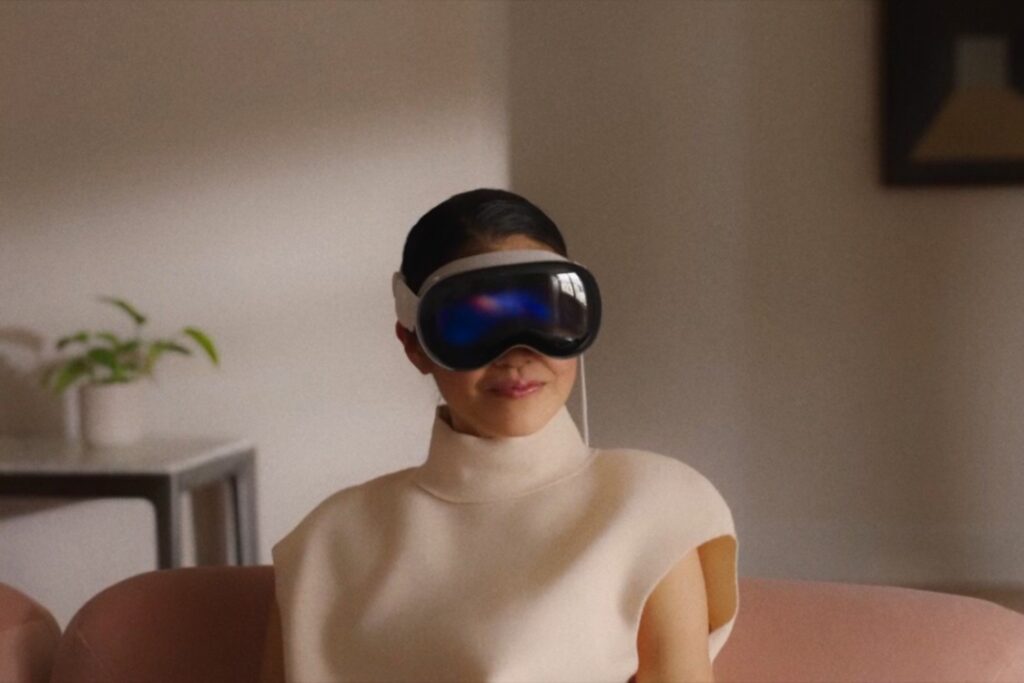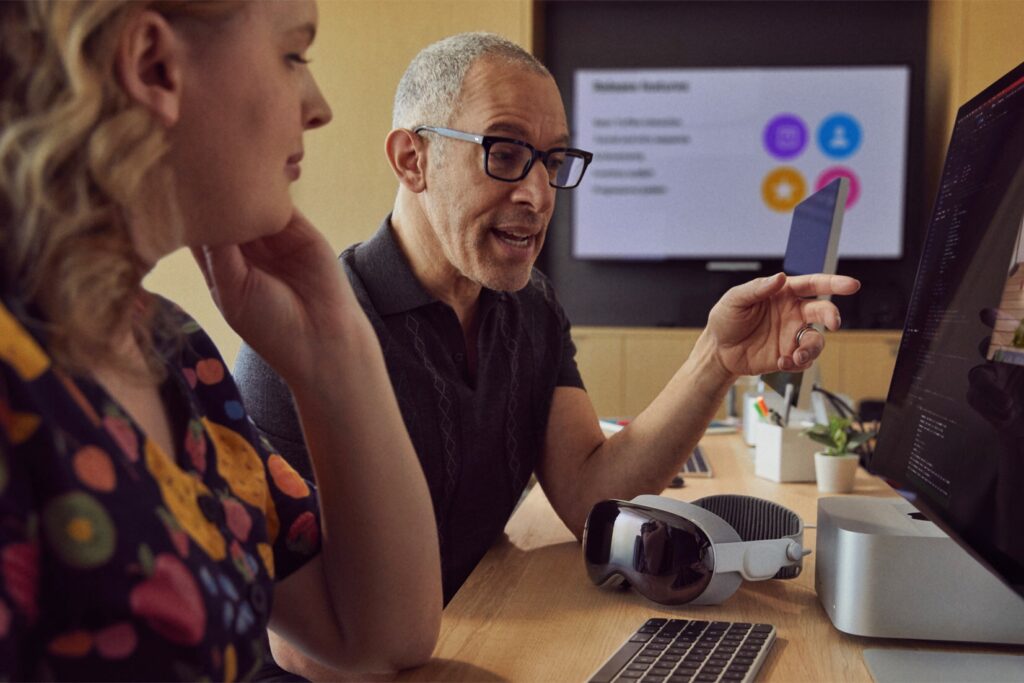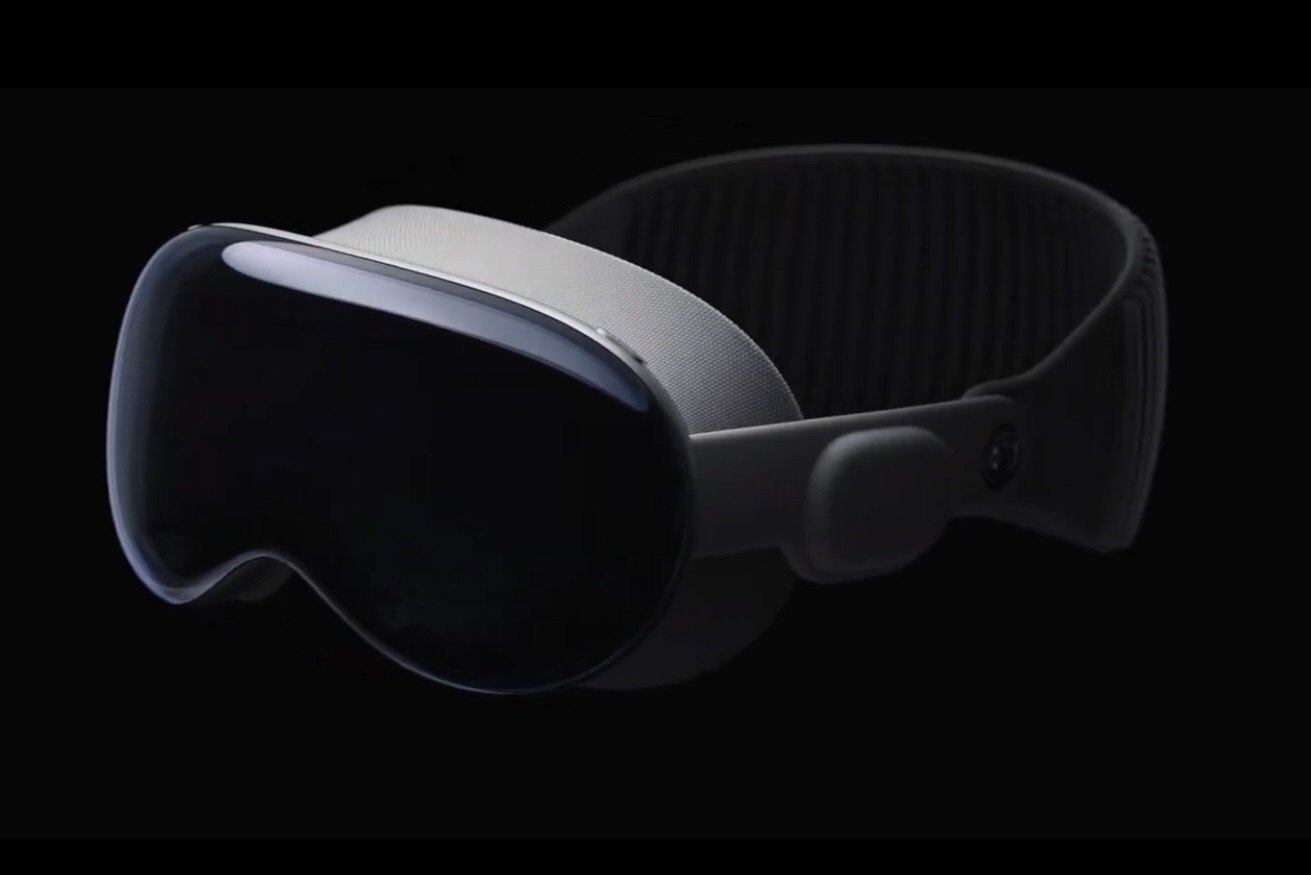In June, Apple made a grand announcement about their latest creation, the Vision Pro, a computer that you wear on your face. What sets it apart is the fascinating way it operates – instead of relying on a physical screen, it projects output directly into your eyes through two tiny but high-resolution displays positioned close to you. This innovative device uses eye tracking and gestures as its primary user interface, eliminating the need for traditional controllers like keyboards or touchscreens.
The Novel Interface: Eye Tracking and Gestures:
Apple’s decision to steer away from physical controllers, as they did with the stylus for the iPhone, shows their commitment to pushing the boundaries of technology. While there have been previous attempts at wearable devices like Google Glass or Meta’s Quest Pro, and gesture control technologies like Leap Motion and the Myo Armband, none have integrated all these elements into such a seamless and coherent vision as the Vision Pro.

Defining the “Spatial Computing” Concept:
The concept of a “spatial computer” is fitting because the Vision Pro can utilize any physical space around you as a canvas for displaying digital outputs. This means you are not limited by a desk or lap, and the perceived viewing area can be vast. For instance, you could be sitting in a cramped airplane seat, yet experience a cinema-sized movie thanks to the device.

Initially, Apple has outlined rather ordinary use cases for the spatial computer, such as using it as a standard computer or iPad with the added benefit of a highly flexible and unrestricted display. While this appeals to those with limited space or those who prefer numerous large displays, the cost of the device, around $3,500, is comparable to high-end large-screen TVs, making it justifiable for certain current use cases. Moreover, Apple’s strategy of leveraging the existing vast number of applications designed for the iPad and iPhone adds further value to the platform.
However, one might wonder if the improved 2D display alone justifies the substantial technological and research efforts invested in the Vision Pro. The real question lies in whether this device can open doors to compelling augmented reality (AR) and virtual reality (VR) applications that genuinely warrant strapping a computer to your head. While the Vision Pro is technically capable of both AR and VR experiences, Apple’s emphasis during their announcement was not on these aspects, but rather on the concept of a spatial computer.
Unleashing the Potential of AR and VR Applications:
To understand the potential of AR and VR applications for this device, it’s essential to grasp their unique value. AR enhances your perception of the surrounding environment, and the Vision Pro achieves this by placing 2D displays in your environment while fixing them in place as you move your head, creating the illusion of the display being part of your surroundings. On the other hand, VR immerses you in a virtual environment, which the Vision Pro can achieve by capturing your full attention through the eye-tracking displays. By dialing this up, you can be transported to entirely new digital spaces.

Despite its capabilities in AR and VR, Apple’s primary focus seems to be on encouraging developers to come up with imaginative and practical applications for the spatial computer. Apple’s approach often involves introducing a new device with a specific purpose, which then evolves and expands as developers innovate and find new uses for it. This approach has proven successful with their previous products, like the iPod, iPhone, iPad, and Apple Watch.
In the case of the Vision Pro, there is potential for apps that bring substantial value by aiding users in making better decisions, especially in contexts where information is costly or challenging to obtain. VR, with its ability to immerse users in new contexts, can present relevant information in a realistic manner, such as providing views inside a building during a fire or offering a safe flight simulator for training. On the other hand, AR can take existing information and deliver only what is needed, like identifying people at a conference or providing helpful overlays during emergency situations.
Apple Vision Pro is a Trailblazing Device in the Ongoing Computing Journey:
Apple Vision Pro represents an exciting experiment in the realm of computing for Apple. By blending eye-tracking, gesture control, and wearable displays, they have created a spatial computer with immense potential. While the current use cases may seem modest, the true value of this device could be unlocked through innovative AR and VR applications. As developers explore its capabilities, we may witness the Vision Pro transforming into a multifaceted tool that enhances productivity and revolutionizes our digital experiences, much like Apple’s previous groundbreaking devices.
“Every once in a while, a revolutionary product comes along that changes everything,” ~ Apple CEO Steve Jobs










